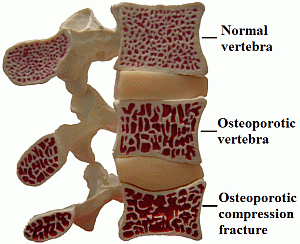Acne is the medical term for common acne. Acne is widespread among teenagers, although a smaller percentage of adults in their 30’s and 40’s still get acne. Common acne is characterized by the presence of one or all of the following: whiteheads, blackheads, papules, pustule or pimples that are seen on the face, chest, back, shoulders, even neck.
Thousands of oil glands can be found in the skin. The oil glands produce sebum, needed to help the skin stay moisturized and effective in its duty as the body’s protective barrier. The face, especially the nose, the mid -cheeks and the forehead have the highest density of oil glands. The back and mid-chest are the parts of the body where the largest oil glands are located. This explains why acne is mostly found in the greatest concentrations on the face, chest and back
Acne begins with clogged skin pores. The early, not-so-noticeable lesions are called comedones Comedones are either open like blackheads or closed like whiteheads. An open comedo is called a blackhead because of the blackish appearance of the skin pore clog. Likewise, a closed comedo is called whitehead because its pore plug is white or skin colored. In terms of openings, blackheads have distended opening around the follicle while a whitehead has a very narrow one, close to the hair follicle. While it’s very tempting, never squeeze your whiteheads or blackheads.
To understand acne better, here are the definitions and explanations of some important terms.
Acne is also often referred to as acne lesions. Lesions are physical changes on the body tissue brought about by a disease or condition.
A papule is a tiny lesion, not more than 5 millimeters in width, that is slightly raised above the skin’s surface. To help you visualize how tiny papules are, they are not easily visible and feel like sandpaper. Pustules, on the other hand, are dome-shaped and contain pus. Pus is typically made up of white blood and dead skin cells plus bacteria.
Nodules are another form of acne. A nodule is dome-or irregularly shaped lesion. Unlike the earlier types of acne, inflammation is already evident in nodules. The inflammation in nodules reaches the deeper layers of the skin and may have already destroyed some tissues. This type of acne may leave some scarring.
Causes of Acne
Before puberty, the sebaceous glands were primarily dormant. During puberty, androgens (male hormones) stir the sebaceous glands into action to produce sebum, the natural body oil. Sebum is supposed to rise and flow to the skin surface. Acne occurs if excessive sebum is produced by the sebaceous glands. The excessive output of sebum results in clogged skin pores which in turn attract dirt, bacteria and foreign debris, and forms the basis of acne. Teenage Acne is almost invariably caused by the increase in hormones during puberty which stimulate the sebaceous glands to produce excess oil.
In each case of acne, it is difficult to pinpoint the exact cause; it is usually a combination of various factors that results in acne for most people. Aside from the excessive production of sebum and age (teenagers are more likely to have acne) the following are risk factors that aid in the occurrence of acne:
- Cosmetics, especially the oil-based ones, can plug additional skin pores.
- Emotional stress has been known to cause acne.
- Personal habits like pricking pimples , over cleansing and the use of Harsh soaps can make acne worse.
Disease and hormonal changes cause acne flare ups, for example pregnancies, or the period preceding menstruation.
- Gender and genetic differences is the reason why more boys than girls have acne, since the hormone Testosterone is converted to DHT, which stimulates excess oil product.
- Environmental conditions like pollution, temperature, etc, are risk Factors.
- Drugs like antibiotics, steroids or oral contraceptives have been known to Trigger the occurrence of acne.
Diet is not medically identified as a cause of acne
Preventing acne
Cleanliness can help reduce bacteria and foreign debris at the site of the pore, but cleanliness alone is not a factor. The following steps would help prevent acne, or at least reduce the severity of outbreaks.
Water therapy
Drinking a minimum of 2 liters daily would keep you hydrated enough to reduce clogged up skin pores. This amount of water daily would enable you to shed more dead cells
Healthy diet
Eating more fruits and vegetables keeps your whole body healthy, especially the skin. With a low-fat diet, there is less oil to clog the skin pores. Make sure you have of the foods identified as antioxidants like vitamins A, C and E as well as those rich in minerals, like zinc.
Choose the Right beauty products
Some beauty products have been proven to aggravate the skin, helping acne form. Some acne sufferers use cosmetics to cover up some blemishes without realizing that the present acne may still get worse because of the additional pores plugged by the cosmetics applied on the skin. You may try natural – instead of chemical-based products such as facial washes with tea tree oil, however about 4% of the population has a skin reaction to tea tree oil, so always test this natural medication on a small area of skin first.
Develop Good Habits
Develop habits that would not add to more plugged pores on the face and anywhere else. For examples, do not leave make up products on your skin when you sleep. Keep your hair away from face because hair contains oil. Never prick your pimples. Pimples on the road to being healed without scars will just become more infected.
At the same time, keep in mind that over-cleansing your skin may irritate it and consequently make the acne worse than it currently is.




